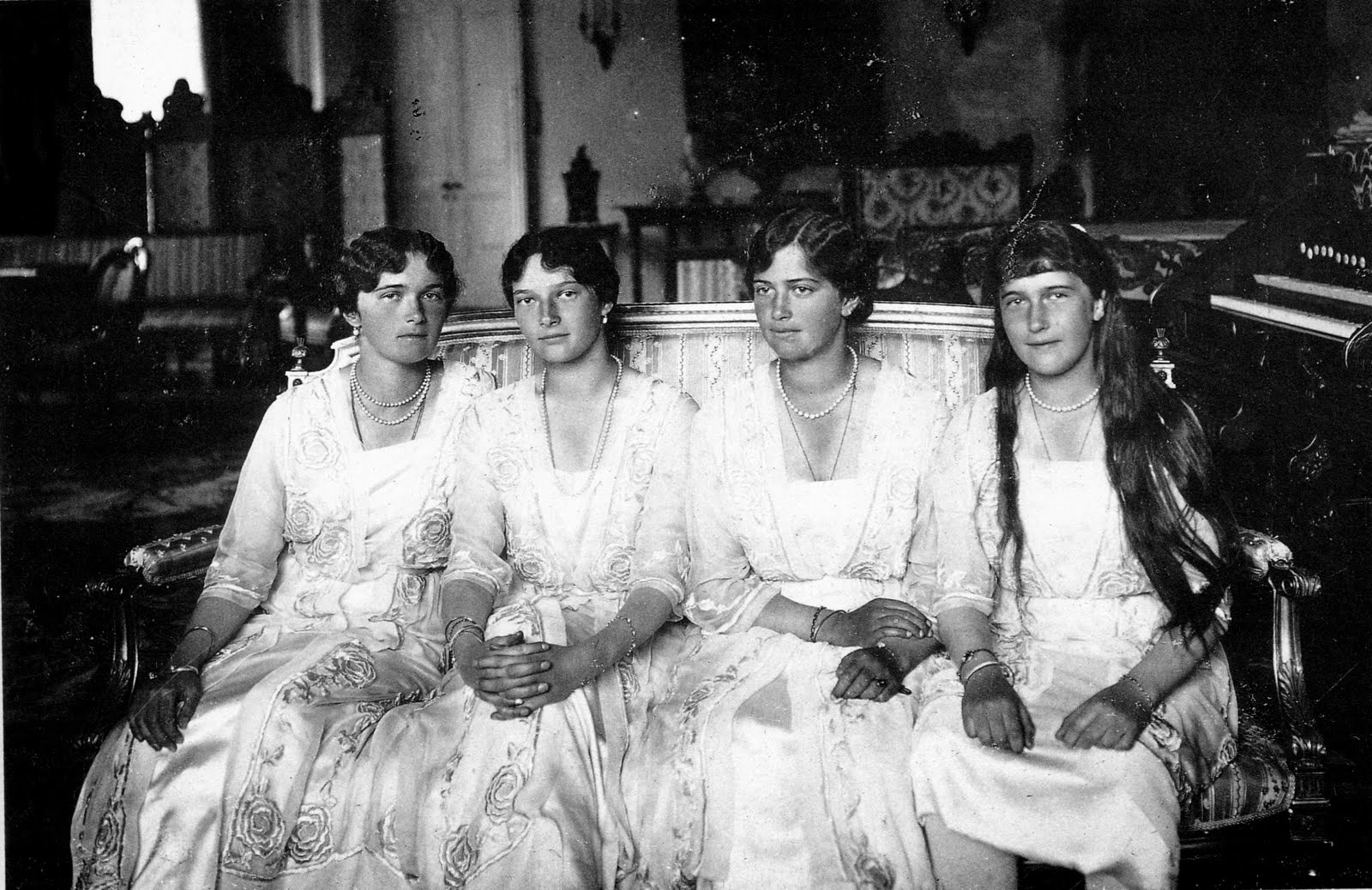
Postcard of Romanov Grand Duchesses Olga, Tatiana, Maria, and Anastasia Nikolaevna of Russia, c. 1906, held by the Alexander Palace.
The Romanov princesses referred to themselves as OTMA, the first letters of each of their names. Their mother did her best to treat them and make them appear as a oneness – a group of girls, rather than individuals. They were even dressed alike. This postcard shows how close they were. In the hopes for a boy, the four princesses were born in quick succession. The girls were the most photographed princesses in the world and a major public and private disappointment. They grew up in opulence and extravagance that is almost unrivaled. Yet there is nothing romantic about the Romanovs. All the wealth and privilege in the world could not save these princesses from a horrific end.
As the oldest, Olga was a role model. She was sensitive, yet fierce and independent. She was matched with many foreign princes, but didn’t want to marry any of them. She wanted to stay home and marry a Russian. She worked as a nurse during WWI. She was 22 when she was killed.
Tatiana was said to be the great beauty of the family. She was quite religious, a natural leader and – like her sister – became a Red Cross nurse. She may have been a great nurse, if she had not been gunned down at 21.
Treated as somewhat of a soft middle child, Maria was sweet and shy. She was often made fun of and left out by her older sisters. When WWI was upon Russia, she was too young to become a nurse, but she still visited soldiers in the hospitals and played board games with them. Maria was executed at 19.
Anastasia is the most mythologized of the sisters. She was the youngest and quite a spirited girl, who liked attention, playing pranks, and was described as a tomboy. Contrary to popular legend, Anastasia did not escape and live to an old age: she was murdered along with her entire family at the age of 17.
After WWI, their lives at the Alexander Palace in St. Petersburg became secluded, insulated to protect them from the fomenting revolutionary dangers outside. Inside the walls of the palace, they spent much time with the notorious sexual predator monk, Rasputin. While they mourned his death, their relationship with him was fraught at best.
After a terrible last train journey, on which it is posited that the girls were molested, the family was kept under house arrest in Ekaterinburg. On the night of 16 July 1918, the family was lined up and executed by drunk Bolshevik troops. No one survived, and their bodies were buried in a field called Porosenkov Log in the Koptyaki forest. Only the tsar’s death was announced – the fate of the family was kept secret for over eight years. Even after the deaths were announced, their bodies were not found until 1979.
Anastasia still holds contemporary fascination, with a musical imagining of the youngest Romanov daughter currently on Broadway. The real lives of these girls shows that romanticizing princesses does a disservice to the understanding of who and what is worth idealizing and finding admirable.
-Ashley E. Remer
Head Girl
Girl Museum Inc.
This post is part of our 52 Objects in the History of Girlhood exhibition. Each week during 2017, we explore a historical object and its relation to girls’ history. Stay tuned to discover the incredible history of girls, and be sure to visit the complete exhibition to discover the integral role girls have played since the dawn of time.
